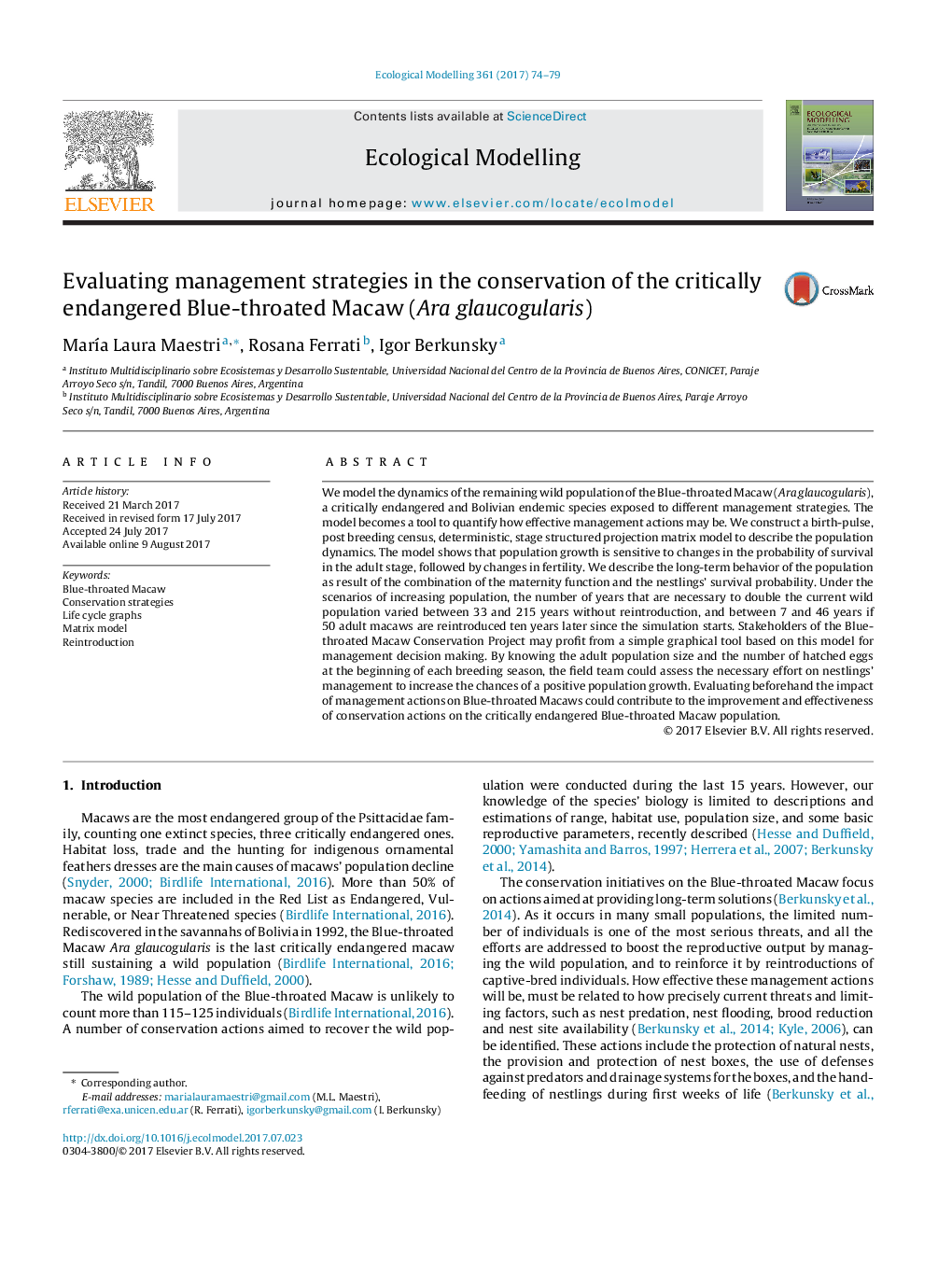| Article ID | Journal | Published Year | Pages | File Type |
|---|---|---|---|---|
| 5741996 | Ecological Modelling | 2017 | 6 Pages |
â¢Population growth is much more sensitive to the survival of adults.â¢We analyzed which management actions give a better result towards conservation.â¢Model allowed us simulate different options of reintroduction.â¢We make a simple graphical tool for management decision making.
We model the dynamics of the remaining wild population of the Blue-throated Macaw (Ara glaucogularis), a critically endangered and Bolivian endemic species exposed to different management strategies. The model becomes a tool to quantify how effective management actions may be. We construct a birth-pulse, post breeding census, deterministic, stage structured projection matrix model to describe the population dynamics. The model shows that population growth is sensitive to changes in the probability of survival in the adult stage, followed by changes in fertility. We describe the long-term behavior of the population as result of the combination of the maternity function and the nestlings' survival probability. Under the scenarios of increasing population, the number of years that are necessary to double the current wild population varied between 33 and 215 years without reintroduction, and between 7 and 46 years if 50 adult macaws are reintroduced ten years later since the simulation starts. Stakeholders of the Blue-throated Macaw Conservation Project may profit from a simple graphical tool based on this model for management decision making. By knowing the adult population size and the number of hatched eggs at the beginning of each breeding season, the field team could assess the necessary effort on nestlings' management to increase the chances of a positive population growth. Evaluating beforehand the impact of management actions on Blue-throated Macaws could contribute to the improvement and effectiveness of conservation actions on the critically endangered Blue-throated Macaw population.
